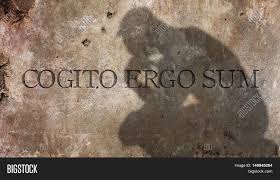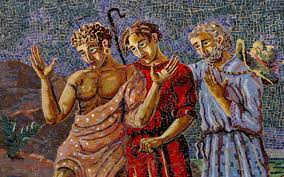Dr Francis Kodiyan MCBS As Christians in India celebrate the 1950th anniversary of the martyrdom of St Thomas the Apostle, the Father of the Indian Church, I recall the famous fresco, The Last Supper of Leonardo da Vinci (1452-1519), the most versatile genius of the Renaissance, an engineer, a scientist and a grand master of the arts of painting, sculpture and architecture. This original fresco can be found at the Church of St Mary of Graces, Milan, Italy. If we take a close look at it, we cannot but capture the privileged position given to St Thomas. Being convinced of the greatness, courage, profound faith experience and adventurous missionary life of the Apostle, Da Vinci attributes to him a place, immediately next to the Lord. Pope John Paul II, recognising the significant role played by St Thomas in the Asian evangelisation, in his Apostolic letter Tertio Millennio Adveniente affirms: "As far as Asia is concerned, the Jubilee will remind us of the Apostle Thomas, who, according to tradition, brought the proclamation of the Gospel at the very beginning of the Christian era to India, where missionaries from Portugal would not arrive until about the Year 1500" (TMA 25). Many, however, consider St Thomas as unintelligent, obstinate and doubtful basing on his statement: "Unless I see in his hands the print of the nails, and place my finger in the mark of the nails, and place my hand in his side, I will not believe (Jn 20, 25) while ignoring his other significant statements such as "Let us also go, that we may die with him" (Jn 11, 16), "Lord we do not know where you are going; how can we know the way" (Jn 14, 5). To these doubtful people, my answer is the Archimedean point for Descartes’ theory of knowledge, namely: cogito, I think, and one of its premises, dubito, ergo sum! I doubt, therefore I exist. If one doubts, he knows for certain that he exists. Doubt arises from thinking. Thought with a genuine desire to learn the truth leads to faith. Doubt in the sphere of faith may be followed by dark nights, aridity and stubbornness. But for an honest and enduring seeker this would be what is called faith seeking understanding. Thomas’ dubito about the apparition of the Risen One manifests his credo seeking understanding. This is proved in his proclamation of faith in the Risen Lord, "My Lord and my God" (Jn 21, 28) which is the Easter faith par excellence. Understanding the genuineness of Thomas’ dubito, the Lord affectionately called him and said, "put your finger here; look, here are my hands, give me your hand; put it into my side. Do not be unbelieving any more but believe" (Jn 20, 27). At the encounter with the Risen Lord, Thomas was purified and further strengthened by what he saw, heard and experienced. Following upon this he fully devoted his life to the task of proclaiming the Lord to the people near and far alike. Therefore, the victorious maxim for St Thomas the apostle is not dubito ergo sum but credo ergo sum. I believe therefore I exist which he expressed through his axiom "My Lord and My God". With strengthened faith St Thomas voyaged to the far East to bear witness to the Risen Lord among the people of India. In 52 AD St Thomas the Apostle landed at Malyankara (Mussiris) and established seven Christian communities at Kodungalloor, Palayur, Kottakavu (North Parur), Kokkamangalam, Kollam, Niranam, and Nilackal (Chayal). How was it possible for him to undertake such a task? Even before Christ, South India was internationally famous for trade especially for its spices such as black pepper, cloves, cardamoms, nut mug, cinnamon, etc. Phoenicians, Egyptians, Greeks, Arabs, Jews and Romans came and settled in Malabar (the present- day Kerala) for trade. Romans had warehouses guarded by their own soldiers in Kerala. Historians say that the first Jewish settlement in Kerala was under the leadership of Joseph Rabban soon after the Babylonian conquest of Judea in 586 BC. The Jewish Synagogues at Kodungalloor, Mattancherry, Kollam, North Parur, Mala etc. are some of the silent witnesses for the irrefutable historical presence of Jewish colonies in Kerala. For instance, in my village, Chendamangalam, which is 10km away from Kodungalloor and 5km from Kottackavu, there still exists a synagogue, a Jewish Street, and a cemetery. All of these are living reminders of the century-long Jewish presence in Malabar. In 72 AD St Thomas was martyred at the Little Mount nearby Madras and was buried at Mylapore. On 3 July 230 AD his body was taken to Edessa, a fact recorded by St Ephrem (306-373) in his writings. For St Thomas Christians of India July 3 is a great feast. They call it Dukrana in Syriac which means anamnesis, remembrance; in Memory of his bloodshed and martyrdom. "Do this in memory of me" (1 Cor 11,23) which is currently very significant as Indian Christians undergo severe persecution in the hands of age-old fanatics whose forefathers killed St Thomas 1950 years ago. During the crusades, Italian crusaders wanted to bring the relics of St Thomas from Edessa to Italy. Due to dangers and lack of security on their way they had kept it in 1144 in a Greek island called Kios. On 6 September 1258 they brought it to Ortona, a small town in Abruzzo, Italy. Now St Thomas’ relics are venerated at the St Thomas Cathedral, Ortona. From the seven Christian communities which St Thomas established in South India there sprang forth the great joint-family of St Thomas Christians who were in full communion with the Assyrian Church of the East. As they followed the East Syrian Liturgy (Chaldean) they began to be known as Syrian Christians. The Chaldean Patriarch Iso-Yahb III (650-658) raised the Church of India to the Metropolitan dignity. The actual administration was placed in the hands of an Indian priest with the title ‘Archdeacon of All India’; he was in effect the civil and religious superior of the entire St Thomas community up until the 17th century. The Portuguese navigator Vasco da Gama's historical South Indian landing in 1498 at Kozhikode brought to Kerala not only the European colonisation but also the systematic and organised Latinisation orchestrated by the Portuguese missionaries which took a definitive form in the Synod of Diamper in 1599. Subsequently there prevailed widespread discontent among the St Thomas Christians which they finally manifested in the Coonan Cross Oath at Mattancherry in 1653. This protest also paved the way for subsequent tragic divisions within the single community of St Thomas Christians. Today there are seven independent Churches of St Thomas Christians with more than six million faithful. They are Catholics: the Syro Malabar and the Syro Malankara, Orthodox: the Malankara Syrian Orthodox (Jacobite) and Malankara Orthodox Syrian, Mar Thoma Syrian, Thozhiyoor Syrian, and the Church of the East.
Latest Editorials

Credo Ergo Sum
Dr Francis Kodiyan MCBS As Christians in India celebrate the 1950th anniversary of the martyrdom

Go to the Periphery
Francis Kodiyan MCBS Peripheries Ten years ago, on March 13, 2013 Cardinal Jorge Mario Bergoglio

Love Quotient
Live Lent with Love Lent is an invitation to live the higher grades of Love. To experience Lent w

Journeying Together
On 7 May 2022 the Emmaus Province of the Missionary Congregation of the Blessed Sacrament (MCBS) was
hi
cnkjsdf
tight
content
BNB
BMNB

Lorem Ipsum is simply dummy
This is a wider card with supporting text below as

Lorem Ipsum is simply dummy
This is a wider card with supporting text below as
Previous Issue
BNB
BMNB
tight
content
hi
cnkjsdf

Journeying Together
On 7 May 2022 the Emmaus Province of the Missionary Congregation of the Blessed Sacrament (MCBS) was

Love Quotient
Live Lent with Love Lent is an invitation to live the higher grades of Love. To experience Lent w

Go to the Periphery
Francis Kodiyan MCBS Peripheries Ten years ago, on March 13, 2013 Cardinal Jorge Mario Bergoglio

Credo Ergo Sum
Dr Francis Kodiyan MCBS As Christians in India celebrate the 1950th anniversary of the martyrdom

Lorem Ipsum is simply dummy
This is a wider card with supporting text below as